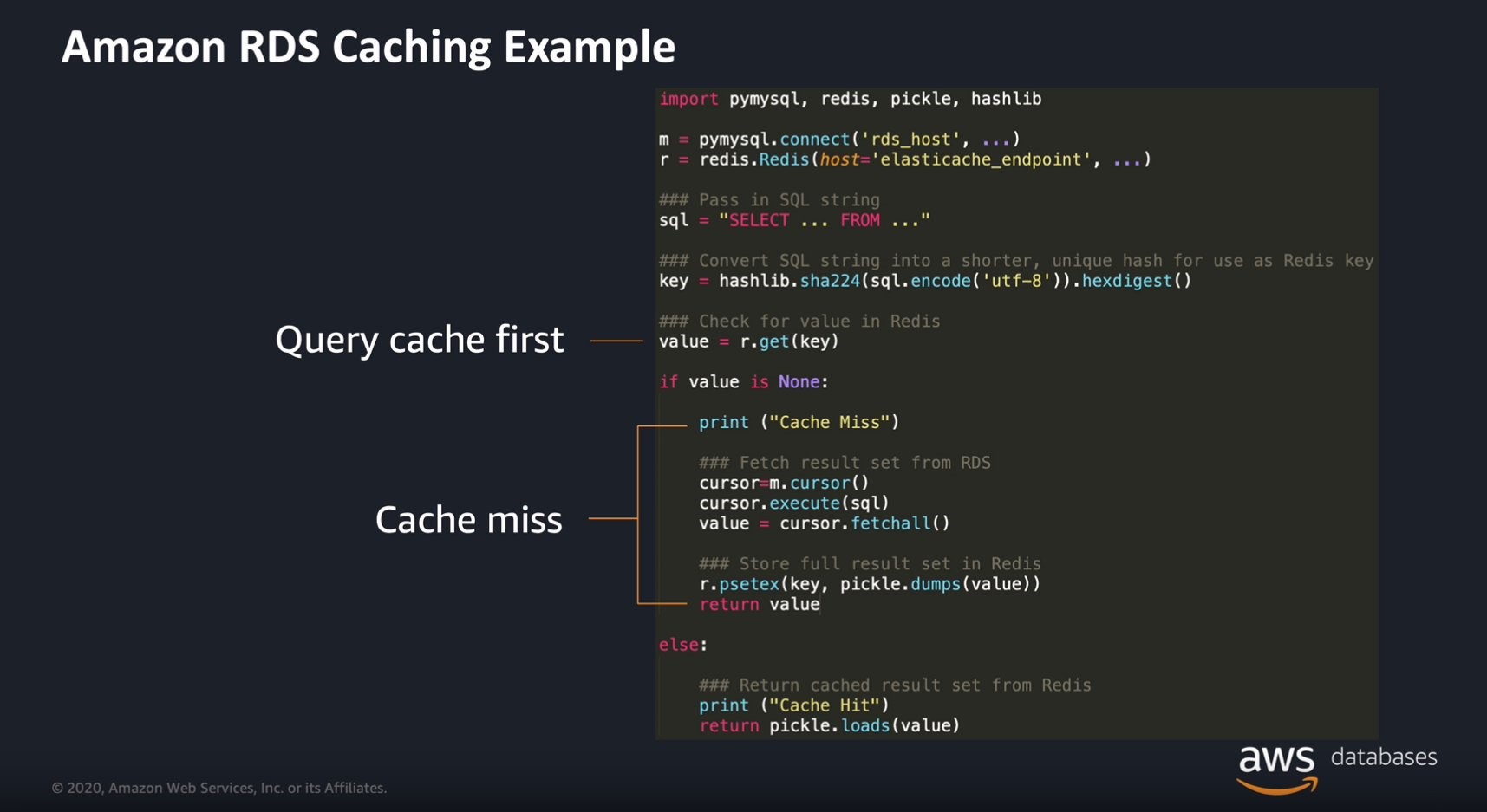AWS Database Blog
Get started with Amazon ElastiCache for Redis and Memcached: Introducing the ElastiCache learning path
Ready to get started with Amazon ElastiCache? Introducing the new learning path Amazon ElastiCache: In-memory data store fundamentals, use cases, and examples.
ElastiCache is a managed in-memory caching service compatible with Redis and Memcached, enabling you to seamlessly set up, run, and scale in-memory data stores in the cloud. In this new learning path, follow along with videos and demos from an ElastiCache expert to walk through key use cases, Redis and Memcached data structures, caching patterns, and more. You can use this learning path to:
- Learn why in-memory data stores are uniquely qualified to support low latency and high throughput use cases
- Understand in-memory data structures and where they best serve your application
- Gain a deeper understanding of caching and streaming use cases
In this post, we introduce the six video modules in this learning path and their key learning objectives. We hope this helps you navigate your ElastiCache learning experience.
1. In-memory fundamentals and overview
In the first module, you learn why application performance is business critical and the differences between in-memory data stores and disk-based databases. Plus, learn how ElastiCache provides low latency and high throughput for your most demanding applications.
2. Common in-memory use cases
In-memory data stores are used for high-velocity use cases including caching, online leaderboards, real-time data streaming, and geospatial queries. In the second module, you learn the unique advantage of in-memory data structures compared to data on disk.
3. Diving deep into Redis and Memcached data structures
In the third module, learn about the different data structures available for Redis and Memcached and how to apply them within your applications. Check out an overview of each data structure, their performance efficiency, and considerations when implementing them.
4. Caching patterns for different backends
Virtually any API, data store, or service that can be queried can also be cached. In the fourth module, you learn fundamental caching concepts and strategies. You also review code examples of caching Amazon Relational Database Service (Amazon RDS) query results and Amazon Simple Storage Service (Amazon S3) objects. Plus, we share tips for memory management, key naming conventions, and client configuration.
5. Redis Pub/Sub, Streams, and use cases
Redis Pub/Sub and Streams data structures are commonly used to support real-time notifications and streaming data. In the fifth module, we tell you when to use Redis Pub/Sub and Redis Streams, how to implement them in applicable use cases, and best practices.
6. Global Datastore for Amazon ElastiCache for Redis
Amazon ElastiCache for Redis Global Datastore provides fully managed, fast, reliable, and secure cross-Region replication. With Global Datastore, you can write to your ElastiCache for Redis cluster in one Region and have the data available to be read from two other cross-Region replica clusters. This enables low latency reads and disaster recovery (DR) across Regions. In the final module, we teach you how to set up Global Datastore and share tips on using its features.
Summary
We hope you enjoyed this introduction to the learning path Amazon ElastiCache: In-memory data store fundamentals, use cases, and examples. Get started with ElastiCache on the ElastiCache console. To ask a general question about the service, please post on the ElastiCache Discussion Forum.
About the Author
 Lizzy Nguyen is a Database Product Marketing Manager at AWS.
Lizzy Nguyen is a Database Product Marketing Manager at AWS.
